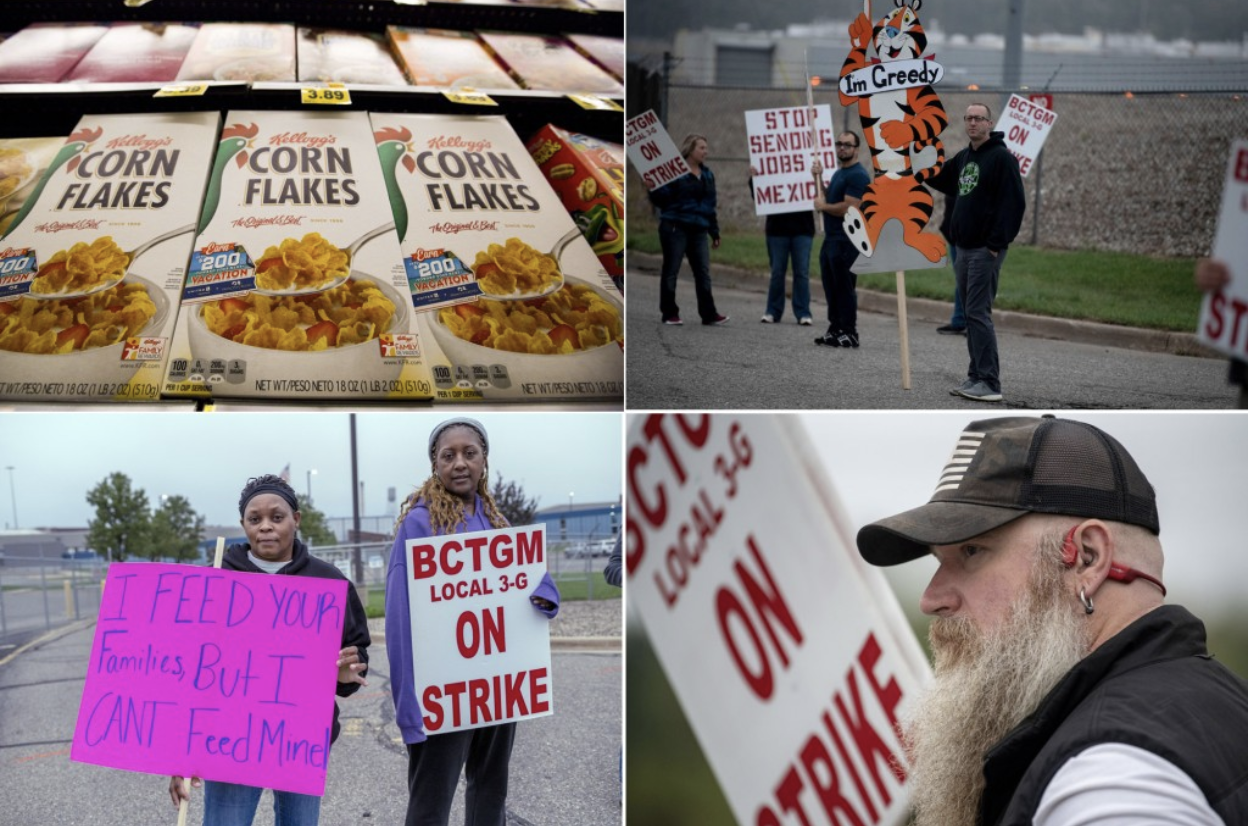“I’m Greedy!” A picket image of Tony the Tiger ironically plays on the famous Kellogg’s Frosted Flakes mascot’s catchphrase in the midst of a new 1,400-worker strike. Another sign more aptly reads, “I Feed Your Family, But I Can’t Feed Mine.” While Kellogg workers labored through the pandemic working egregious hours — sometimes 16-hour overtime shifts, up to seven days a week — the company’s CEO Steve Cahillane made $11.6 million in pocketed profit. Workers across the country lost their jobs or suffered through labor shortages over the last year, yet CEOs like Cahillane saw their own compensation rise. The wealth gap is widening, and while labor production continues to keep up with demand or even increase, wages and benefits are not improving for poor workers. However, a recent win for striking Nabisco workers may change that by serving as an inspiration for a reinvigorated movement of labor strikes aimed at improving conditions for America’s working class. Unions may be the best chance we have to reduce poverty and the widening income disparities exacerbated by the pandemic.
Researchers Tom Vanheuvelen and David Brady recently published an article detailing how unions could combat poverty in the U.S. While recognizing that labor unions have always played a role in creating more egalitarian outcomes for the working poor, they criticize the neglect of union effects in American poverty research. Merging both individual and state-level data of union households and state union density, they find that unions have a positive effect on reducing poverty. The results show that residence within a union household significantly reduces all poverty outcomes, and that states with higher union densities even reduce poverty in nonunion households. Vanheuvelen and Brady have essentially confirmed what labor activists already know to be true: that unions are pivotal in creating better outcomes for the working class.
It’s no secret that labor unions fight for better wages and benefits for the workers they represent, but decades of anti-union propaganda have weakened state union densities across the board. An article from NPR maps out the decrease: 50 years ago almost one-third of workers were a part of a union, and now it’s only about one in 10. There were a number of political decisions made to structurally prevent unions from gaining power in the U.S. The 1947 Taft-Hartley Act prevented unions from ever forming in the South by placing restrictions on a union’s political and financial powers. President Reagan’s 1981 firing of 13,000 air traffic controllers destroyed the PATCO union and set a union-busting precedent for employers to follow. The U.S. continues to degrade union powers through the recent 2018 U.S. Supreme Court decision Janus v. AFSCME, which ruled that public employees no longer have to pay fees to unions which cover their collective bargaining. By weakening unions through the political system, poor Americans find it much harder to bargain for better wages and benefits, trapping them into low wages while the richest Americans become richer.
So what can we do to reverse the damage done to unions and in turn reduce poverty? Pass the PRO Act.
The Protecting the Right to Organize Act of 2021 (H.R. 842) includes substantive measures to return power to unions and workers. Among other provisions, this act extends the definition of employees to broaden protections for striking workers (including undocumented and managerial staff), allows and protects secondary strikes outlawed by the Taft-Hartley Act, and reverses the decision of Janus v. AFSCME by allowing unions to require fees from employees covered by the collective bargaining. In Kellogg’s case, it would expand prohibitions against the replacement of workers participating in a strike, therefore disallowing the company to replace the striking workers with new ones. It also bans “captive audience” meetings which would force employees to sit through anti-union meetings, while simultaneously allowing electronic voting to speed up union election processes.
The PRO Act does a great job of restoring power to already formed unions, but lacks in disabling anti-union tactics which are allowed under the NLRB. The recent vote to unionize an Amazon warehouse in Bessemer, Alabama was defeated with only about 30% of workers voting yes. While this could have been aided by a speed up in electronic voting, Amazon is upgrading their tactics. Text messages, emails, leaflets, and even fliers posted in the bathroom urged workers to vote no — no doubt including common anti-union sentiments that the union will take your fees but do little at the bargaining table. The PRO Act’s ban on captive audience meetings would have helped, but against the litany of other misinformation tactics this one ban would have little overall effect. While the PRO Act would be good to pass in its current form — if it ever gets voted through the Senate, we should demand it go farther in preventing anti-union tactics by employers.
To combat poverty, we need to strengthen worker powers through unions. Increasing welfare and providing other social safety net benefits for poor families would be better to address poverty in unemployment, but those protections change with the wind in terms of political majority rule. Creating better wages and benefits through unions is a long-term effect that could benefit nonunion workers as state union densities rise. At any rate, even if more unions form and more protections are put in place through legislation, workers are the ones on the frontline fighting for their basic labor rights. Spread the good word about unionization, call your senator to pass the PRO Act, and remember to support current strikes through boycotts. Kellogg workers deserve to feed their families too.
Image Credit: Image by Alyssa Keown is accessed via PolitiSay.



